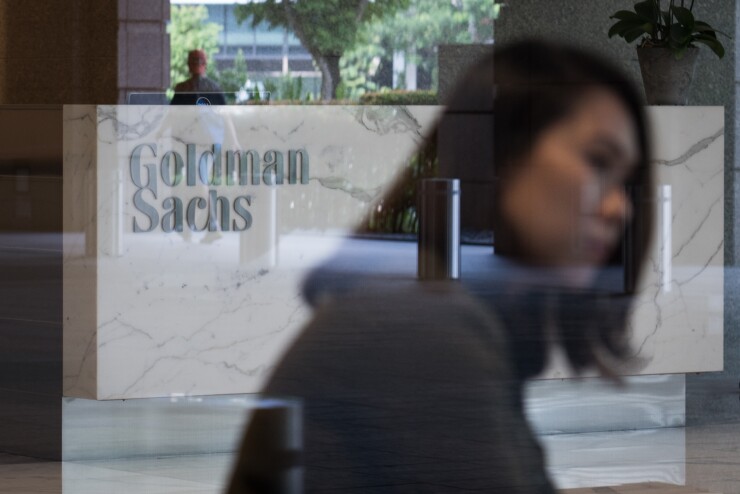
With its big bets, practiced secrecy and narrow focus, Goldman Sachs always stood apart from the rest of the large banks on Wall Street. No longer.
Goldman’s new leaders on Wednesday gave investors an unprecedented look under the hood for a firm that scoffs at even displaying its name on its headquarters, laying out a plan that could leave it looking more like an everyday bank.
Out were private-equity deals with the firm’s own money; in were the unglamorous businesses of transaction banking and deposit gathering. The investment bank long known for its lucrative partnership now touted how it could cut costs by delayering management and using robotics.
Some Goldman Sachs veterans see the moves as falling in with the crowd at the expense of the company’s unique strengths. Others see it as the inevitable reckoning with a reality that other banks embraced years ago.
“Imagine a Goldman Sachs in which one or more of these opportunities really blossoms,” Chief Executive Officer David Solomon said at its debut investor day. “Our earnings power could grow dramatically.”
The Wall Street giant reveals how it plans to capture a bigger share of the HNW and mass affluent markets.
Investors and analysts descended on the firm’s offices, filling out an amphitheater, as the management trotted out profitability targets the likes of which it hasn’t given in more than a decade.
The firm laid out a goal of boosting return on equity north of 13% in the next three years, up from the 11.5% it posted in 2019, excluding litigation charges. The majority of the boost will come from using deposits to shave $1 billion of interest expense and trimming another $1.3 billion in operating costs by shedding some managers and moving employees to lower-cost locales.
“We are embracing the bank model,” Chief Financial Officer Stephen Scherr said.
The cost cuts will push the bank’s efficiency ratio down to 60%, a more dramatic reduction than many analysts expected. Goldman also plans to grow in areas that have been lucrative for its rivals: wealth management, retail lending and transaction banking — the business of moving money around the world for large companies.
While the firm isn’t providing specifics on how many jobs might be eliminated by the expense initiative, “there are some people that are affected by that,” Solomon said in a Bloomberg Television interview. “We are also hiring at the same time.”
“So far, so good with what we see, even if targets are more medium- and long-term oriented than some may desire,” Mike Mayo, a bank analyst at Wells Fargo, wrote to clients.
It was a unique development for a firm that has long shunned disclosures that other banks give. Goldman for the first time gave a breakdown of the capital devoted to each division and the return on that capital.
On a return on tangible equity basis, Goldman’s medium-term goal of more than 14% compares with rival Morgan Stanley‘s target of 13% to 15% over the next two years. JPMorgan Chase will host its investor day next month, and at last year’s event set a 17% ROTE goal, which it achieved in 2019.
The morning featured an all-male lineup providing details on the firm’s plans, with division leaders pitching the promise their units hold in the years ahead. Solomon said one of the firm’s key goals going forward is boosting the diversity of its top ranks.
One key theme was short-term pain that will pay off in the long haul. The company boosted its technology budget by almost 10% to $4.3 billion this year as it embarks on new initiatives. And it expects a $1 billion pretax loss in 2020 from the forays into consumer and transaction banking that it says will start adding to profits in a few years.
Earlier this month, Goldman revamped the way it breaks down results by division to highlight growth in its consumer business. It created a consumer and wealth management unit that houses the Marcus online lending business and Goldman’s credit-card venture with Apple.
Goldman still awaits a final resolution to criminal probes examining its conduct in raising money for a Malaysian fund. Solomon previously oversaw the division that’s embroiled in the scandal. The bank could be on the hook for fines that run into the
“I am personally laser-focused on” integrity following the incident, Solomon said Wednesday.
--With assistance from Sonali Basak.






